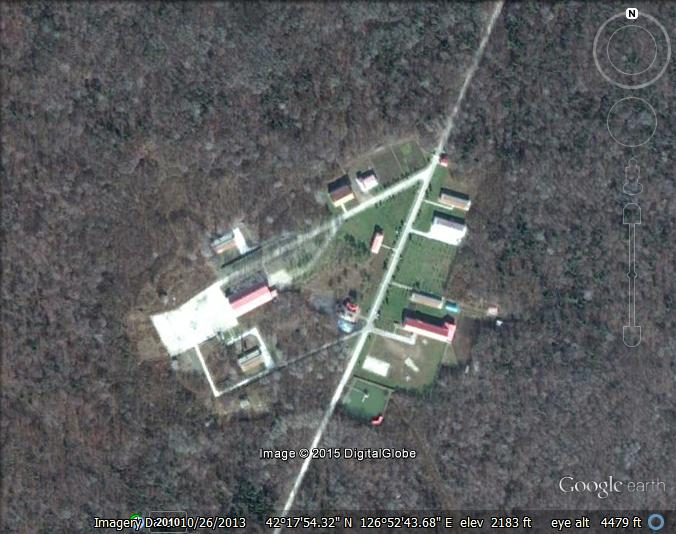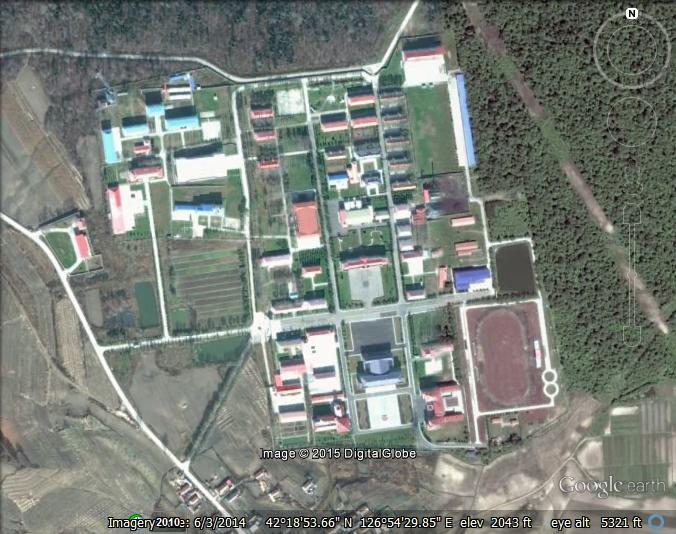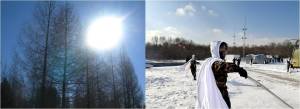Chillin’ With the Second Artillery
“China Deploys Nuclear Missiles at Mt. Baekdu,” screamed the headline in the The Chosun Ilbo, ending with a warning from a professor at the Korea National Diplomatic Academy, “If China has deployed DF-21 missiles at Mt. Baekdu, it’s a warning to the military alliance among Seoul, Washington and Tokyo.”
No, no and no. It’s not a deployment, it’s not at Mount Baekdu and it’s not a warning to anyone.
Elements of China’s 810 Launch Brigade, based in Dalian, have probably conducted a DF-21 training exercise out of the training base near Jingyu, in Jilin Province. The news? It was in the snow. The original Chinese story is clear about that fact, both by explicitly describing the deployment as a temporary training exercise and providing enough information to identify the unit in question. Can’t anyone read?
Since the late 1960s, Chinese launch units have trained at Jingyu, which is about 100 km from the peak of Baekdusan (Mt. Baekdu, also known in China as Changbaishan). On December 29, the PLA published a story with photographs of one such exercise. (The story has been taken down, but you can see all the pictures here.) On January 15, a Chinese-language news story appeared in the International Herald Leader, which is a Xinhua publication. In that story, an expert used weather reports and an analysis of the trees to geolocate the position of the exercise near Changbaishan.
The general geolocation of the exercise to Jilin Province was accurate. But either the expert or the reporter goes way too far—as we will discuss—concluding that the altitude of the exercise must be 1000-1800 meters and, therefore, on the slopes of Changbaishan. Moreover, the story then engages in a bunch of silly claims speculating about the motives for this “new” deployment that actually is not happening.
All these stories omit a super important detail that is well-known to any PLA-watcher.
Chinese missile units deploy to special training sites to conduct these sorts of exercises, especially if they actually plan to launch a missile. One reason for using dedicated training sites is that troop training is highly observable. By training at a dedicated site, Chinese units help keep the location of operational launch sites secret. This is why the PLA feels okay about posting pictures of the exercise. It’s a training facility, not a real deployment location.
China has one such facility in Jilin Province—a complex near Jingyu that is also home to a missile launch site and a Second Artillery combined arms training base. (In fact, the DF-4 was originally called the “Chingyu” missile because Jingyu is where the US intelligence analysts saw it first.) Jingyu is about 100 km from Changbaishan. There is a lot to look at, but there is a known launch site here 42°17’54.20″N, 126°52’43.53″E and the headquarters of the training base are here 42°18’53.72″N, 126°54’31.42″E.


The original story clearly described the event as a month-long “winter training exercise” (次冬训演练). The original story also contained an interview with Lu Xidong (陆希东), who has been publicly identified as the commander of the 810 Launch Brigade based in Dalian. (Catherine Dill, keeper of the CNS Second Artillery ORBAT looked him up; although perhaps he’s moved units.) What has happened is that the 810 Launch Brigade in Dalian has gone up to Jingyu for an exercise. Chinese launch brigades have been doing this for decades—since Shinzo Abe’s great-uncle was Prime Minister of Japan and Park Chung Hee was President of South Korea. This is a totally routine event, other than the slightly novel aspect that the exercise was conducted in cold weather with temperatures dipping down to -30 degrees Celsius. That is totally consistent with the weather out in Jingyu this December, by the way. (You’ll have to convert Fahrenheit to Centigrade.)
Moreover, the expert is way too confident about the trees and elevation. Look, I am no arborist, but there are open source descriptions of the different forest zones in Jilin Province. While I am too lazy to track down a copy of the standard reference work on the subject, Vegetation of China (1980), this academic paper contains the relevant details:
Forest vegetation varies from coniferous and broad leaf mixed forests dominating the lower elevations (500–1,100 m a.s.l.) to subalpine coniferous forest at the higher elevations (1,100–1,800 m a.s.l.).
Jingyu is about 700 m above sea level. Honestly, that’s what the trees in the picture look like to me. But there is an easier way to do this. Panaramio, in Google Earth, has lots of images of the trees around Jingyu base—and, surprise, they look pretty similar to what we see in the photographs.

I would, therefore, be very skeptical of using the trees to assert that the exercise is occurring halfway up Changbaishan. If I had to guess, I’d say the images tend to confirm an exercise occurring out of Jingyu. But the story makes reference to traveling significant distances during the course of the exercise. So, who the hell knows? I haven’t tried to site the exact location of the exercise. There is video as well, however, so you could probably determine the precise location if you really wanted to spend the time.
The Second Artillery does, by the way, have a brigade of DF-21s based at Tonghua, about 175 km from Baekdusan, which covers targets in Northeast Asia. But the 816 Launch Brigade at Tonghua has been there for decades, dating back to when it operated nuclear-armed DF-3 ballistic missiles. So, that’s hardly news or a warning to anyone.
Stories like this make analysts like me crazy. It’s obviously careless reporting, yet I will encounter claims of a Second Artillery Unit “near Baekdusan” for years, if not the rest of my miserable life. I’ll have to deprogram graduate students and be the jerk who corrects people in meetings. All because no one at the Chosun Ilbo bothered to check with a single competent expert before running that story. What? Mark Stokes doesn’t have email? Henry Boyd at IISS was on vacation? There are literally half a dozen people who would have been happy to correct Chosun Ilbo had they bothered to send a single, solitary email.
So, no China is not deploying nuclear-armed missiles on Mount Baekdu. Instead, the 810 Launch Brigade out of Dalian froze their balls off spending a month reenacting the opening battle sequence on Hoth from Empire Strikes Back.
**The author would like to thank Henry Boyd, Catherine Dill, Gregory Kulacki, Joshua Pollack and Mark Stokes for their comments on an earlier draft of this article.
Jeffrey Lewis is Director of the East Asia Nonproliferation Program at the James Martin Center for Nonproliferation Studies (CNS), Monterey Institute of International Studies, and a frequent contributor to 38 North.
